Here are some science questions from the Sixth, Seventh, and Eighth Grade Standards to help you test your knowledge of the Next Generation Sunshine State Standards.
The questions are chosen randomly, so this quest will be different each time you reload the page.
* Click here to see only the most recently added questions.
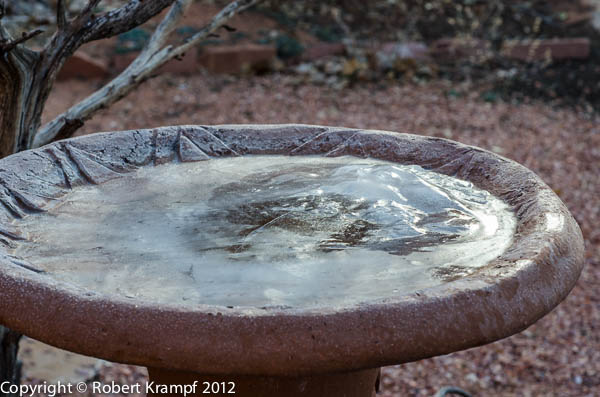
When water freezes into ice, its volume increases. What happens to its mass?
-
It increases.
No. When water freezes, it takes up more space, but the mass stays the same. -
It stays the same.
Yes. When water freezes, it expands to take up more space, but its mass stays the same. Mass is the measure of how much "stuff" is there. Freezing water does not create new water or add more "stuff". It just makes the water take up more space. -
It decreases.
No. The mass stays the same, even when the water freezes. -
Water does not have mass.
No. Everything that is made out of matter has mass.
Click to see which state standards this question tests, and which of my videos, experiments, and other resources support that topic.
Florida
SC.4.P.8.3 Explore the Law of Conservation of Mass by demonstrating that the mass of a whole object is always the same as the sum of the masses of its parts.
| The Difference Between Weight and Mass | video, checked |
| Review Matter-2 | practice |
| Review Matter-6 | practice |
SC.5.P.8.1 Compare and contrast the basic properties of solids, liquids, and gases, such as mass, volume, color, texture, and temperature.
>>> Teacher Page: States of Matter
| A Bouncing Water Balloon | video |
| Egg States | video, checked |
| Experimenting with Dry Ice | video, free, checked |
| Wax and Wood, part 1 | video, checked |
| Wax and Wood, part 2 | video, checked |
| Ice Cream Science | video, checked |
| Raw Egg or Boiled? | video, checked |
| Air Space | video |
| Air has Weight | text page |
| Teach It Right the First Time. | text page, free |
| Review Matter-2 | practice |
| Review Matter-1 | practice |
| Review Matter-3 | practice |
| Review Weather-10 | practice |
SC.8.P.9.1 Explore the Law of Conservation of Mass by demonstrating and concluding that mass is conserved when substances undergo physical and chemical changes.
| Making Butter | video, free, ClosedCaptions, Updated |
| Review Matter-2 | practice |
| Review Matter-6 | practice |
Utah
UT.5.I.1.b Compare the weight of a specified quantity of matter before and after it undergoes melting or freezing.
| Ice Cream Science | video, checked |
| Review Matter-2 | practice |
UT.7.I.2.a Use appropriate instruments to determine mass and volume of solids and liquids and record data.
| Review Matter-2 | practice |
NGSS
5-PS1-2 Measure and graph quantities to provide evidence that regardless of the type of change that occurs when heating, cooling, or mixing substances, the total weight of matter is conserved.
| Making Butter | video, free, ClosedCaptions, Updated |
| The Difference Between Weight and Mass | video, checked |
| Ice Cream Science | video, checked |
| Chemical and Physical Changes | video, ClosedCaptions, checked |
| Air has Weight | text page |
| Review Matter-2 | practice |
| Review Matter-6 | practice |
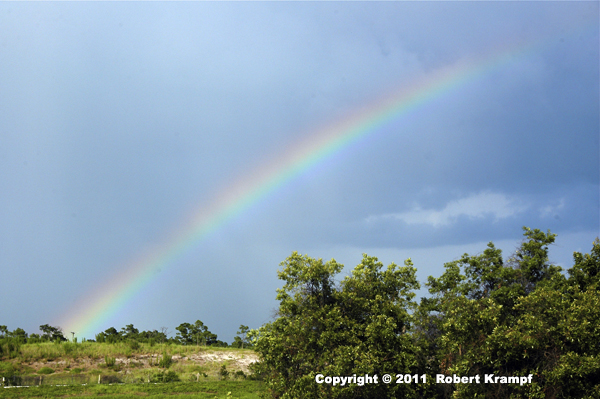
Rainbows are produced by:
-
Refraction
Partly correct. Light entering the raindrop is reflected off of the back surface. -
Reflection
Partly correct. As the light passes from air to water, and from water to air, the light is bent or refracted. Different colors are refracted different amounts, separating the colors. -
Both reflection and refraction
Correct! When you see a rainbow, the sun will always be behind you. (There are other, similar looking phenomena which you see when facing the sun, but they are not rainbows.) The sunlight enters each raindrop, is refracted (bent). Different colors are refracted different amounts. When the light hits the far side of the raindrop, part of it goes on through, and part of it is reflected back towards the sun (and towards you.) As it passes leaves the drop, the difference in density from water to air refracts (bends) the light even more, separating the colors into bands for the rainbow. -
Neither reflection no refraction
No. One or both take part in producing the rainbow.
Click to see which state standards this question tests, and which of my videos, experiments, and other resources support that topic.
Florida
SC.3.P.10.3 Demonstrate that light travels in a straight line until it strikes an object or travels from one medium to another.
| Pinhole Eyeglasses | video, checked |
| Why Wet Things Turn Dark | video, checked |
| Growing Crystals Under the Microscope | video, free, learnalong, checked |
| Changing the Speed of Light | video |
| Why is Foam White? | video, checked |
| Microscopes: Growing Crystals | video, free, learnalong, Updated |
| Sunglass Science: Birefringence | video, free, Updated |
| Sunglass Science: Polarized Light | video, free, Updated |
| Mirage | video, free, ClosedCaptions, Updated |
| A Long Lens | text page |
| Review Light-1 | practice |
| Review Light-2 | practice |
| Review Light-3 | practice |
| Review Light-4 | practice |
| Review Light-5 | practice |
SC.3.P.10.4 Demonstrate that light can be reflected, refracted, and absorbed.
| Pinhole Eyeglasses | video, checked |
| Looking for Rainbows | video |
| Why Wet Things Turn Dark | video, checked |
| Growing Crystals Under the Microscope | video, free, learnalong, checked |
| Changing the Speed of Light | video |
| Why is Foam White? | video, checked |
| Onion Crystals | video |
| Microscopes: Growing Crystals | video, free, learnalong, Updated |
| Sunglass Science: Birefringence | video, free, Updated |
| Sunglass Science: Polarized Light | video, free, Updated |
| Mirage | video, free, ClosedCaptions, Updated |
| A Long Lens | text page |
| Sunlight, Energy, and Crayons | text page, free |
| Review Light-1 | practice |
| Review Light-2 | practice |
| Review Light-3 | practice |
| Review Light-4 | practice |
| Review Light-5 | practice |
SC.7.P.10.2 Observe and explain that light can be reflected, refracted, and/or absorbed.
| Pinhole Eyeglasses | video, checked |
| Why Wet Things Turn Dark | video, checked |
| Growing Crystals Under the Microscope | video, free, learnalong, checked |
| Finding Fat in Foods | video, ClosedCaptions, checked |
| Changing the Speed of Light | video |
| Onion Crystals | video |
| Why is Foam White? | video, checked |
| Microscopes: Growing Crystals | video, free, learnalong, Updated |
| Sunglass Science: Birefringence | video, free, Updated |
| Sunglass Science: Polarized Light | video, free, Updated |
| Mirage | video, free, ClosedCaptions, Updated |
| A Long Lens | text page |
| Sunlight, Energy, and Crayons | text page, free |
| Review Light-1 | practice |
| Review Light-2 | practice |
| Review Light-3 | practice |
| Review Light-4 | practice |
| Review Light-5 | practice |
SC.8.E.5.11 Identify and compare characteristics of the electromagnetic spectrum such as wavelength, frequency, use, and hazards and recognize its application to an understanding of planetary images and satellite photographs.
| Sunprints | video |
| Sunglass Science: Birefringence | video, free, Updated |
| Sunglass Science: Polarized Light | video, free, Updated |
| A Color You Can't See | video, free, checked |
| CD Spectrum | text page |
| Review Light-3 | practice |
Utah
UT.8.IV.1.e Demonstrate how white light can be separated into the visible color spectrum.
| White Balance | video, checked |
| Sunglass Science: Birefringence | video, free, Updated |
| Sunglass Science: Polarized Light | video, free, Updated |
| A Color You Can't See | video, free, checked |
| Sunlight, Energy, and Crayons | text page, free |
| Review Light-3 | practice |
NGSS
1-PS4-3 Plan and conduct an investigation to determine the effect of placing objects made with different materials in the path of a beam of light.
| A Color You Can't See | video, free, checked |
| Pinhole Eyeglasses | video, checked |
| Why Wet Things Turn Dark | video, checked |
| Growing Crystals Under the Microscope | video, free, learnalong, checked |
| Sunprints | video |
| Changing the Speed of Light | video |
| Why is Foam White? | video, checked |
| Onion Crystals | video |
| Microscopes: Growing Crystals | video, free, learnalong, Updated |
| Sunglass Science: Birefringence | video, free, Updated |
| Sunglass Science: Polarized Light | video, free, Updated |
| Mirage | video, free, ClosedCaptions, Updated |
| A Long Lens | text page |
| Review Light-1 | practice |
| Review Light-2 | practice |
| Review Light-3 | practice |
| Review Light-4 | practice |
| Review Light-5 | practice |
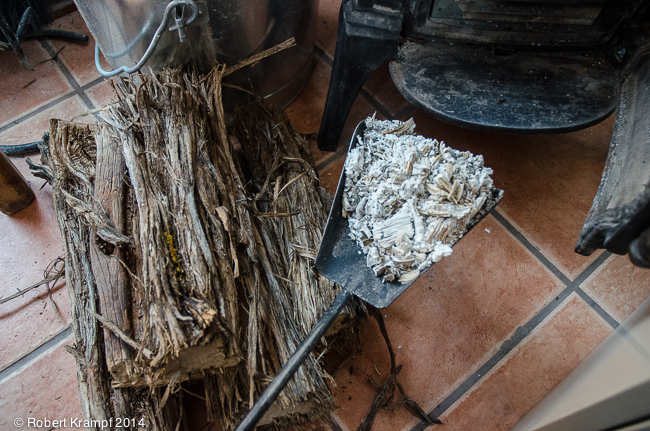
The wood in this pile will be reduced to this much ash when it is burned. What happens to the rest of the mass from the wood?
-
It was converted into energy.
No. Burning does not convert matter into energy. -
It evaporated.
No. While any moisture in the wood may have evaporated, wood itself does not evaporate. -
It was converted into water and carbon dioxide.
Yes! Burning converts the cellulose in wood into water vapor and carbon dioxide. The white ash that is left behind is made up of the minerals and nutrients which were taken in by the plant's roots. -
The matter is still there. It just got smaller.
No. If all of the matter was still there, the mass and weight would still be the same. The ash is much lighter than the wood, because the water vapor and carbon dioxide are now part of the air of the room. Still, if we could weigh all of the ash, water vapor, and carbon dioxide, the total mass would still be the same.
Click to see which state standards this question tests, and which of my videos, experiments, and other resources support that topic.
Florida
SC.4.P.8.3 Explore the Law of Conservation of Mass by demonstrating that the mass of a whole object is always the same as the sum of the masses of its parts.
| The Difference Between Weight and Mass | video, checked |
| Review Matter-2 | practice |
| Review Matter-6 | practice |
SC.8.P.9.1 Explore the Law of Conservation of Mass by demonstrating and concluding that mass is conserved when substances undergo physical and chemical changes.
| Making Butter | video, free, ClosedCaptions, Updated |
| Review Matter-2 | practice |
| Review Matter-6 | practice |
Utah
UT.5.I.1.a Compare the total weight of an object to the weight of its individual parts after being
disassembled.
| Review Matter-6 | practice |
UT.5.I.1.d Investigate chemical reactions in which the total weight of the materials before and after reaction is the same (e.g., cream and vinegar before and after mixing, borax and glue mixed to make a new substance).
| Changing Colors, part 1 | video |
| Changing Colors, part 2 | video |
| The Chemistry of Milk | video, ClosedCaptions, checked |
| Polymers and Slime | video, free, ClosedCaptions, checked |
| Review Matter-6 | practice |
UT.5.I.3.d Compare a physical change to a chemical change.
| Changing Colors, part 1 | video |
| Changing Colors, part 2 | video |
| The Chemistry of Milk | video, ClosedCaptions, checked |
| Making Butter | video, free, ClosedCaptions, Updated |
| Chemical and Physical Changes | video, ClosedCaptions, checked |
| Paper Petals | video, ClosedCaptions |
| Changing How We Look at Changing | text page, free |
| Review Matter-4 | practice |
UT.8.I.4.c Demonstrate that mass is conserved in a chemical reaction (e.g., mix two solutions that result in a color change or formation of a precipitate and weigh the solutions before and after mixing).
| Microscopes: Growing Crystals | video, free, learnalong, Updated |
| Growing Crystals Under the Microscope | video, free, learnalong, checked |
| Review Matter-6 | practice |
NGSS
5-PS1-2 Measure and graph quantities to provide evidence that regardless of the type of change that occurs when heating, cooling, or mixing substances, the total weight of matter is conserved.
| Making Butter | video, free, ClosedCaptions, Updated |
| The Difference Between Weight and Mass | video, checked |
| Ice Cream Science | video, checked |
| Chemical and Physical Changes | video, ClosedCaptions, checked |
| Air has Weight | text page |
| Review Matter-2 | practice |
| Review Matter-6 | practice |
MS-PS1-5 Develop and use a model to describe how the total number of atoms does not change in a chemical reaction and thus mass is conserved.
| Scientific Thinking and Creative Thought, part 3 | video, checked |
| Scientific Thinking and Creative Thought, part 2 | video, checked |
| Scientific Thinking and Creative Thought, part 1 | video, checked |
| Catalysts | video, ClosedCaptions, checked |
| Review Matter-6 | practice |
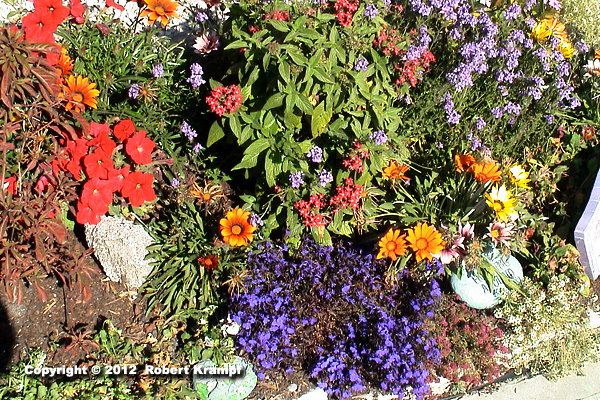
When Nancy and I moved from Florida to our new home in Utah, we found that many of the flowers we grew in Florida would not grow well here. Why?
-
The soil is different.
This is part of the answer. The soil here is mostly sand, and is very alkaline. The soil in Florida had much more organic matter and was more acidic. Plants that need rich soil do not grow well here. -
The climate is different.
This is part of the answer. The climate in Utah is very different from Florida. The winters are MUCH colder (down to -20°F) and the summers are MUCH hotter (up to 125°F). The climate here is also much drier. When we lived in Jacksonville, FL, we got about 52 inches of rainfall each year. Here in Utah, we only get about 14 inches of rainfall each year. Some of the plants from Florida can grow here, but the ones that cannot stand the cold, heat, and dry conditions do not. -
The animals are different.
This is part of the answer. The wildlife here is much different from the animals in Florida. There are insects here that eat plants that were not bothered by Florida insects. There are rock squirrels, western pocket gophers, jack rabbits, mule deer, and many other animals here that love to eat many kinds of flowers. Plants that do not have a bitter taste, spines, or other ways to discourage animals do not do well here. -
All of the above.
Yes! All of the answers are correct. When you take an organism from one environment and put it into another, you may see different results. If the organism is not adapted for the new environment, it may die or not grow well. If it is very well adapted to the new environment, it may take over, crowding out some of the native organisms.
Click to see which state standards this question tests, and which of my videos, experiments, and other resources support that topic.
Florida
SC.5.L.17.1 Compare and contrast adaptations displayed by animals and plants that enable them to survive in different environments such as life cycles variations, animal behaviors and physical characteristics.
| Onion Crystals | video |
| A Walk in the Park | video, checked |
| Nature Watching | video, checked |
| Calling a Woodpecker | video, checked |
| Selective Smelling | video, checked |
| Seed Search | video, ClosedCaptions, checked |
| Flowers | video, ClosedCaptions |
| Review Adaptation-5 | practice |
| Review Adaptation-6 | practice |
| Review Plants-1 | practice |
| Review Adaptation-2 | practice |
| Review Adaptation-3 | practice |
| Review Adaptation-4 | practice |
SC.5.L.15.1 Describe how, when the environment changes, differences between individuals allow some plants and animals to survive and reproduce while others die or move to new locations.
| Who Evolved on First? | text page, free, checked |
| Review Adaptation-1 | practice |
| Review Adaptation-5 | practice |
| Review Adaptation-6 | practice |
SC.7.L.15.3 Explore the scientific theory of evolution by relating how the inability of a species to adapt within a changing environment may contribute to the extinction of that species.
| Thoughts on an Exoskeleton | text page, free |
| Review Adaptation-5 | practice |
| Review Adaptation-6 | practice |
Utah
UT.4.V.2.b Cite examples of physical features that allow particular plants and animals to live in specific environments (e.g., duck has webbed feet, cactus has waxy coating).
| Hunting with an Umbrella | video, free, ClosedCaptions, Updated |
| A Walk in the Park | video, checked |
| Seed Search | video, ClosedCaptions, checked |
| Flowers | video, ClosedCaptions |
| How Does a Butterfly Fly? | text page, free |
| Review Adaptation-5 | practice |
| Review Adaptation-6 | practice |
UT.5.V.2.c Describe how a particular physical attribute may provide an advantage for survival in one environment but not in another (e.g., heavy fur in arctic climates keep animals warm whereas in hot desert climates it would cause overheating; flippers on such animals as sea lions and seals provide excellent swimming structures in the water but become clumsy and awkward on land; cacti retain the right amount of water in arid regions but would develop root rot in a more temperate region; fish gills have the ability to absorb oxygen in water but not on land).
| Review Adaptation-1 | practice |
| Review Adaptation-5 | practice |
| Review Adaptation-6 | practice |
UT.6.V.1.b Compare characteristics common in observed organisms (e.g., color, movement, appendages, shape) and infer their function (e.g., green color found in organisms that are producers, appendages help movement).
| A Walk in the Park | video, checked |
| Selective Smelling | video, checked |
| Onion Crystals | video |
| Thoughts on an Exoskeleton | text page, free |
| Review Adaptation-3 | practice |
| Review Adaptation-4 | practice |
| Review Plants-5 | practice |
| Review Plants-6 | practice |
| Review Adaptation-5 | practice |
| Review Plants-7 | practice |
| Review Adaptation-6 | practice |
UT.7.IV.2.a Predict why certain traits (e.g., structure of teeth, body structure, coloration) are more likely to offer an advantage for survival of an organism.
| Selective Smelling | video, checked |
| Onion Crystals | video |
| Who Evolved on First? | text page, free, checked |
| Thoughts on an Exoskeleton | text page, free |
| Review Adaptation-1 | practice |
| Review Adaptation-2 | practice |
| Review Adaptation-5 | practice |
| Review Adaptation-6 | practice |
NGSS
3-LS4-2 Use evidence to construct an explanation for how the variations in characteristics among individuals of the same species may provide advantages in surviving, finding mates, and reproducing.
| Flowers | video, ClosedCaptions |
| Who Evolved on First? | text page, free, checked |
| Review Adaptation-1 | practice |
| Review Adaptation-3 | practice |
| Review Adaptation-4 | practice |
| Review Adaptation-5 | practice |
| Review Adaptation-6 | practice |
MS-LS1-4 Use argument based on empirical evidence and scientific reasoning to support an explanation for how characteristic animal behaviors and specialized plant structures affect the probability of successful reproduction of animals and plants respectively.
| Orange Slices | video, ClosedCaptions |
| Bacteria and Antibiotics | video, ClosedCaptions |
| Flowers | video, ClosedCaptions |
| Onion Crystals | video |
| A Walk in the Park | video, checked |
| Nature Watching | video, checked |
| Calling a Woodpecker | video, checked |
| Selective Smelling | video, checked |
| Pumpkin Guts | video, free, ClosedCaptions, checked |
| Seed Search | video, ClosedCaptions, checked |
| How Does a Butterfly Fly? | text page, free |
| Thoughts on an Exoskeleton | text page, free |
| Review Adaptation-3 | practice |
| Review Plants-2 | practice |
| Review Plants-4 | practice |
| Review Adaptation-4 | practice |
| Review Adaptation-5 | practice |
| Review Adaptation-6 | practice |
| Review Plants-8 | practice |
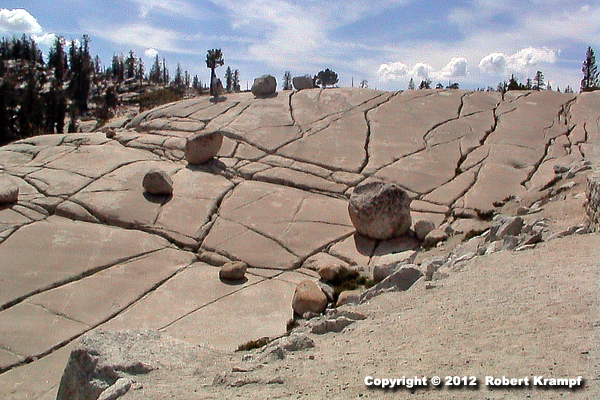
The large cracks in this rock are called expansion cracks. As the overlying rock erodes away, the rock expands, causing the cracks. The cracks are an example of:
-
Erosion
No. Erosion means that the pieces of rocks are being carried away. The overlying rocks have been eroded, but the cracks are not carrying the pieces to a new location. -
Weathering
Yes! As the rocks expand unevenly, tension builds up. When there is enough stress, the rocks break. That breaking of large rocks into smaller pieces is called weathering. -
Both erosion and weathering
No. The rocks are being broken (weathering), but the pieces are staying in place, so there is not erosion. -
Neither erosion nor weathering
No. The cracks show that the rocks are breaking, which is weathering..
Click to see which state standards this question tests, and which of my videos, experiments, and other resources support that topic.
Florida
SC.4.E.6.1 Identify the three categories of rocks: igneous, (formed from molten rock); sedimentary (pieces of other rocks and fossilized organisms); and metamorphic (formed from heat and pressure).
| Evaporites | video, learnalong, checked |
| Igneous Rocks and Bubbles | video, free, learnalong, Updated |
| Sedimentary Rocks | video, learnalong |
| What is a Rock? | video, learnalong, checked |
| Bioclastics: Rocks With No Minerals | video |
| Identifying Igneous Rocks | text page, learnalong |
| Intrusive and Extrusive Igneous Rocks | text page, learnalong |
| Light and Dark Minerals | text page, learnalong |
| Homemade Fossil Dig | text page |
| Foliated and Unfoliated Rocks | text page, learnalong |
| Review Rocks-2 | practice |
| Review Rocks-3 | practice |
| Review Rocks-4 | practice |
| Review Rocks-5 | practice |
| Review Rocks-6 | practice |
| Review Rocks-8 | practice |
| Review Rocks-9 | practice |
| Review Rocks-7 | practice |
| Review Rocks-10 | practice |
| Review Rocks-10 | practice |
| Review Rocks-10 | practice |
| Review Rocks-1 | practice |
SC.7.E.6.2 Identify the patterns within the rock cycle and relate them to surface events (weathering and erosion) and sub-surface events (plate tectonics and mountain building).
| Evaporites | video, learnalong, checked |
| What is a Rock? | video, learnalong, checked |
| The Rock Cycle | video, learnalong |
| Change: Fast and Slow | video |
| Erosion | video, checked |
| Continuous Change | video, checked |
| Bioclastics: Rocks With No Minerals | video |
| Weathering and Erosion | video, learnalong, checked |
| Review Erosion-2 | practice |
| Review Erosion-3 | practice |
| Review Erosion-4 | practice |
| Review Erosion-5 | practice |
| Review Rocks-4 | practice |
| Review Rocks-5 | practice |
| Review Rocks-6 | practice |
| Review Rocks-8 | practice |
| Review Rocks-9 | practice |
| Review Rocks-7 | practice |
| Review Rocks-10 | practice |
| Review Rocks-10 | practice |
| Review Rocks-1 | practice |
| Review Erosion-1 | practice |
Utah
UT.4.III.2.b Distinguish between weathering (i.e., wearing down and breaking of rock surfaces) and erosion (i.e., the movement of materials).
| Change: Fast and Slow | video |
| Erosion | video, checked |
| Weathering and Erosion | video, learnalong, checked |
| Review Erosion-1 | practice |
| Review Erosion-2 | practice |
| Review Erosion-3 | practice |
| Review Erosion-4 | practice |
| Review Erosion-5 | practice |
UT.5.II.1.a Identify the objects, processes, or forces that weather and erode Earth’s surface (e.g., ice, plants, animals, abrasion, gravity, water, wind)
| Change: Fast and Slow | video |
| Erosion | video, checked |
| Continuous Change | video, checked |
| Weathering and Erosion | video, learnalong, checked |
| Review Erosion-1 | practice |
| Review Erosion-2 | practice |
| Review Erosion-3 | practice |
| Review Erosion-4 | practice |
| Review Erosion-5 | practice |
UT.8.III.2.b Describe the role of energy in the processes that change rock materials over time.
| Igneous Rocks and Bubbles | video, free, learnalong, Updated |
| Sedimentary Rocks | video, learnalong |
| Change: Fast and Slow | video |
| Erosion | video, checked |
| Continuous Change | video, checked |
| Weathering and Erosion | video, learnalong, checked |
NGSS
4-ESS2-1 Make observations and/or measurements to provide evidence of the effects of weathering or the rate of erosion by water, ice, wind, or vegetation.
| Change: Fast and Slow | video |
| Erosion | video, checked |
| Continuous Change | video, checked |
| Weathering and Erosion | video, learnalong, checked |
| Review Erosion-1 | practice |
| Review Erosion-2 | practice |
| Review Erosion-3 | practice |
| Review Erosion-4 | practice |
| Review Erosion-5 | practice |
